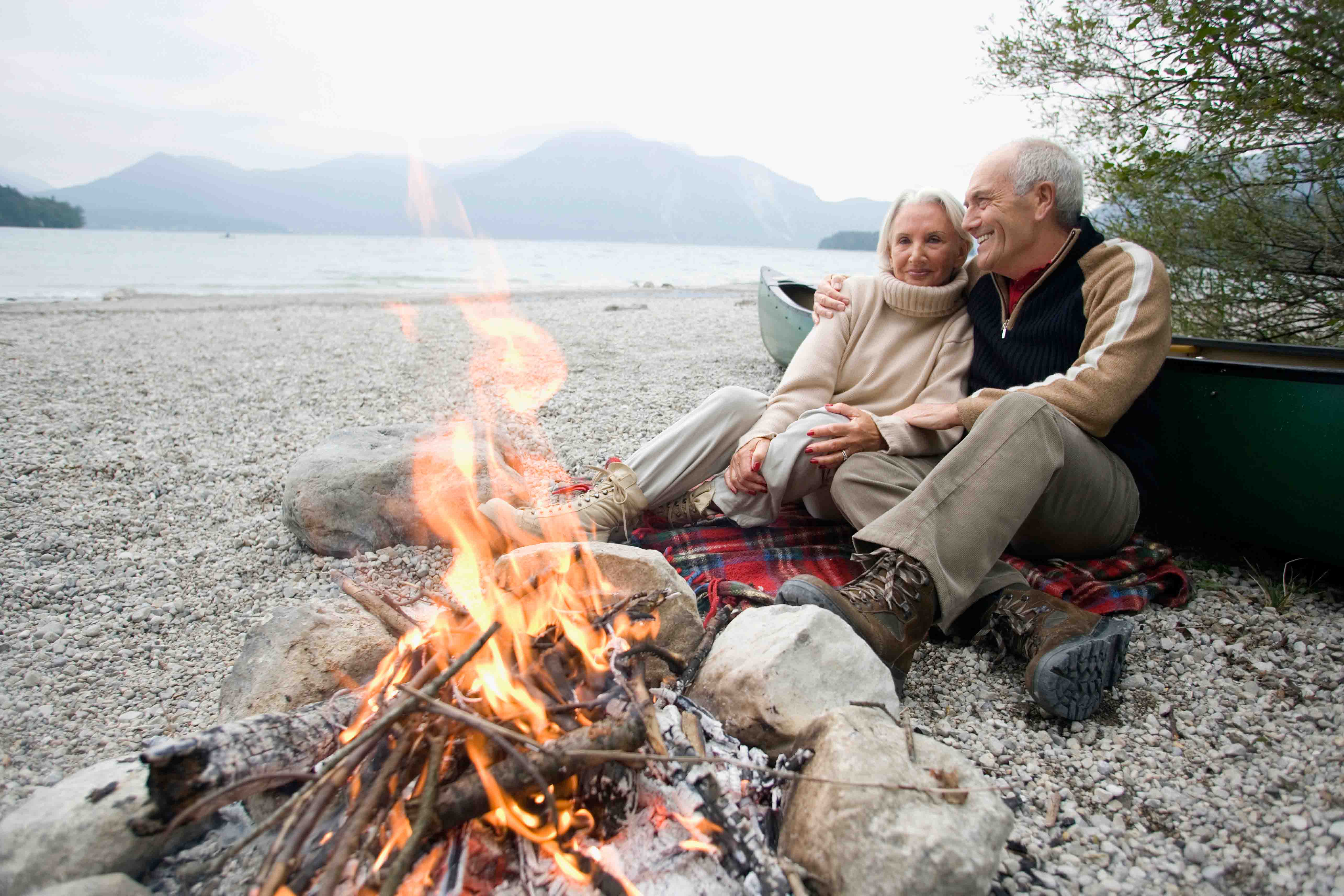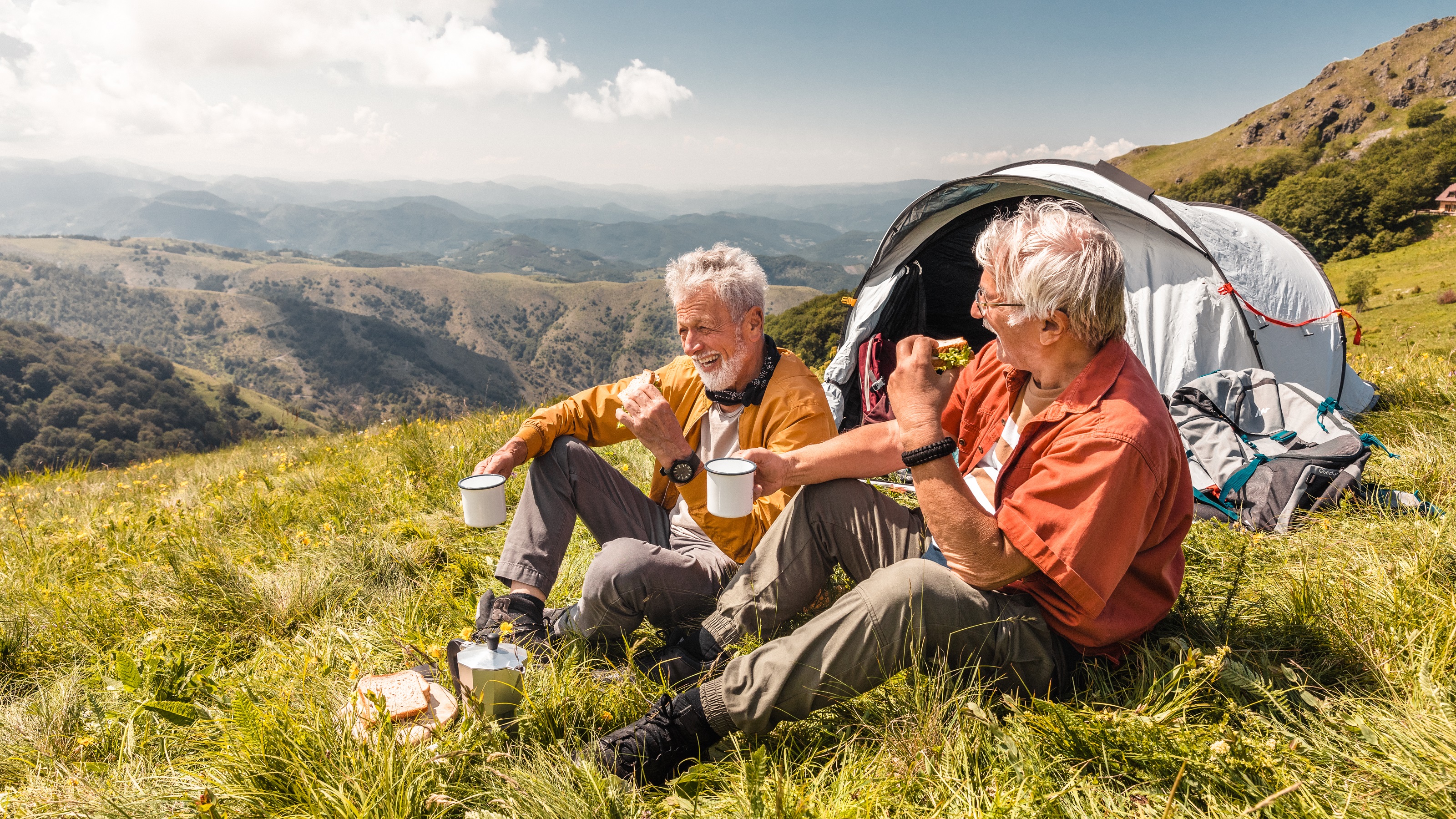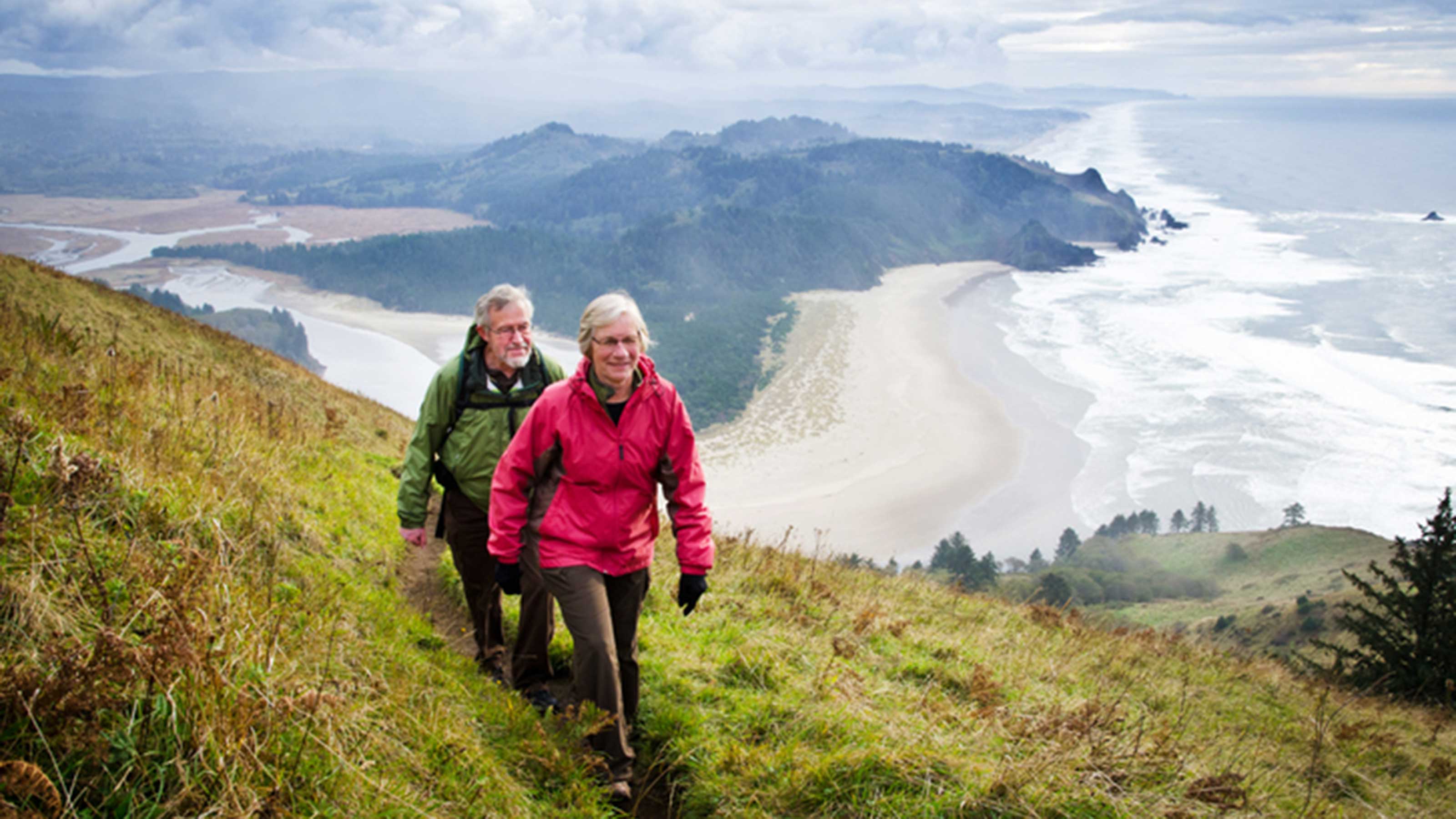Retirees are Getting Into Camping — Here's How You Can, Too
If you can tolerate the bugs and mud, camping is a great way to commune with nature and see the country on a range of budgets

“Thousands of tired, nerve-shaken, over-civilized people are beginning to find out that going to the mountains is going home, that wildness is a necessity, and parks are fountains of life.” — Naturalist John Muir, Our National Parks, 1909
Greg Winslow found his love of camping later in life. “I just had an interest in spending more time outdoors and being with nature,” he says. When he was 51, Winslow bought a tent and a motorcycle, and off he went. He is far from alone.
As we look forward to April and the beginning of the outdoor season for most Americans, many of us will be raising tents and building fires in campgrounds across the country. Nearly 88 million people engaged in camping activities in North America in 2024, with 29% of the campers Baby Boomers or the Silent Generation.
From just $107.88 $24.99 for Kiplinger Personal Finance
Become a smarter, better informed investor. Subscribe from just $107.88 $24.99, plus get up to 4 Special Issues

Sign up for Kiplinger’s Free Newsletters
Profit and prosper with the best of expert advice on investing, taxes, retirement, personal finance and more - straight to your e-mail.
Profit and prosper with the best of expert advice - straight to your e-mail.
For many of these campers, the thrill of seeing a grizzly bear in its natural setting, an alligator slithering through the Everglades, or a mountain goat on the side of a cliff is an intoxicating experience.
Harvard environmental epidemiologist Peter James says spending time outdoors in nature improves both physical and mental health. “The ability to recover from stress is better in natural settings because that’s where we are meant to be,“ says James, who studies how the environment affects health.
Of course, camping is not for everyone. There are bugs, mud, sometimes rain, sometimes snow and even dangerous animals. But it has proven a welcome retreat for many older Americans. There are many resources to help you get started, including online clubs such as those on Facebook or camping groups, like the Harvest Host.
Steve Turner, 71, created the Facebook page “Seniors and Camping” in 2022. “It started as an idea, and it just keeps growing. I have 46,000 members,” a mix of tent campers and RVers, who brainstorm on what to take, where to go and how to fix issues along the way.
Camping pages are easy to locate on Facebook, by searching “Seniors and Camping,” “Tent Camping,” “Girl Camping,” and similar topics.
What you’ll need to go camping

Marcia Cohen of Madison, Wis., had just had knee replacements in 2021 at age 67 during the pandemic. “I wanted to be really active,” she says. “I like kayaking and hiking, but it was a two-hour drive to go kayaking. If I went overnight, I could camp.”
After friends suggested she get a multi-person tent for herself, she bought a Fanttik Outdoor Camping Tent that accommodates up to 10 for around $140, a twin-sized cot (Coleman cots cost between $60 and $160) , an air mattress to put on top, and a foam pad. “I also have a commode ($50-150) inside my tent.”
She considers her tent, her cot, and her commode her three most important camping items.
“There are a couple of things that draw me to camping,” Cohen says. “I am old, but I am not decrepit. It’s very empowering. I am going to be 70 and I don’t need your help.”
Don Diehl and his wife, from Wernersville, Penn., bought a rooftop tent they haul on a trailer (anywhere from $130 to $5,000). They recently trekked to the Arctic Sea, which included traversing 580 miles of dirt roads. “We’ve been wanting to do that trip for years. It’s one of the most beautiful places I’ve seen in my life. You are truly on top of the world and it is an exhilarating experience.”
For Jerry Plaatan, 78, of Green Cove Springs, Fla., camping in a place to indulge his fly fishing passion is key. He likes to share his list of equipment on Facebook. “I’m always looking for something lighter and more compact,” he says.
What you’ll spend to go camping
- A tent. Plaatan likes the Ampex Ultralight 2-Person Adventure Tent, which is lightweight but large at 90"L x 50"W x 42"H. (around $150)
- A lantern or two ($20-80)
- A stove – Plaatan opted for the two-burner Jetboil ($180)
- A comfortable camp chair (around $85-150)
- A cot or air mattress with a sleeping pad
- A sleeping bag for the right temperature (North Rim™ Adult Mummy Sleeping Bag starts at $80)
- A screen room with vertical walls rather than slanted walls to keep water out ($100 and up)
“It’s going to be an evolution,” Plaatan says. “You will find things you don’t like and replace them.”
People 65 and older in Florida can camp at a state park for as little as $8 per night, half the normal price. RV camping is a bit pricier, averaging $30 to $45 per night, according to letstravelfamily.com. It depends on whether you need a full water, sewer, and electric hookup, and it also depends on location. Private campgrounds on the beach can run more than $100 per night for RVs. (There is a reason Kiplinger recommends camping as an option to budget for a vacation when prices keep rising).
But there are also free options, known as boondocking sites. Many areas, especially in western states, offer an abundance of spots for boondocking from riverside shorelines to deep forests. Some sites offer pit toilets, where waste is collected and composted onsite, but not much else, so you must bring everything you need.
Those 62 and older can purchase an America the Beautiful Senior Lifetime pass for $80, or $20 annually to visit some of the nation’s most beautiful natural parks. The pass provides admittance to more than 2,000 sites managed by six federal agencies, including the National Park Service.
Also, 55+ campgrounds offer quiet spots for mature campers and add age-appropriate conveniences and amenities. Voyager Resort & RV Park in Tucson, Arizona, for example, offers its own bar, tennis, shuffleboard and heated pools for right around $60 per night in April.
Joining the Good Sam Club membership is $109 for a three-year membership and gets you a 10% discount at 2,400 RV parks.
Where you can go camping

Bill Gunn, 70, of Indian Harbor Beach, Fla., recommends a trip to western North Carolina, or the mountains of Pennsylvania or New York. “The only challenge is you have to plan ahead now because it is so popular.” That goes for most popular sites.
National parks are a great option. Here’s some basic information for three of the most visited parks:
Yellowstone National Park, Wyoming
Go: Between late spring and early fall. The National Park Service says most reservations are made far in advance, so make reservations as early as possible to ensure your spot.
See: Take a 2-Day Yellowstone National Park Upper and Lower Loop Exploration tour (from $650) to see amazing wildlife, including buffalo, grizzly bears, trumpeter swans and pronghorns, as well as giant waterfalls and volcanic thermal features, including Old Faithful. Or drive yourself.
Cost: The standard entry fee for a private vehicle is $20 - $35. Or purchase an America the Beautiful Pass or Senior Pass for all parks.
Stay: There are campgrounds and lodges inside Yellowstone, and private accommodations near each park entrance for camping, glamping (glamor camping), Airbnbs or hotel stays.
Yosemite National Park, California
Go: Late spring, summer and early fall for the best weather.
See: Gaze up at the breathtaking El Capitan cliff which may be covered with mountain climbers, and experience the wonder of the waterfalls spilling down into the Merced River.
Cost: Campsites range from $10 to $36 per night. Standard entrance passes are accepted for day use and range in cost from $20 - $35.
Stay: The park has 13 campgrounds but getting reservations from April through October can be challenging. Try overnight hiking through the wilderness or choose a High Sierra camp spot.
Great Smoky Mountain National Park, North Carolina/Tennessee
Go: Late spring to early fall.
See: Stunning wildflowers, elk herds and wooded trails are among the highlights of this massive park.
Cost: Standard entry fees apply. $5 for a parking tag, $15 for a 7-day tag or $40 for an annual tag.
Stay: Reserve a spot in one of 10 park campgrounds. Cades Cove and Smokemont are open year-round while others are seasonal. The Treehouse Grove in Gatlinburg, Tenn., offers The Cedar, a luxury glamping cabin that sleeps four for $399 per night.
Roughing it vs. glamping
If you enjoy communing with nature, but from a fancy cabin with all the amenities, try glamping — a portmanteau of glamorous and camping.
While you can expect to get dirty hunching over a faucet to clean dishes when tent camping, you can choose an RV or yurt at a glamping resort with indoor plumbing, electricity, linen sheets and fancy decor. There may be a heated pool and tennis courts.
Glamping tends to be more expensive than classic camping, but for some, it’s a great option.
Campers can glamp by simply taking it up a notch and adding items such as high-end folding chairs, canvas side tables with drink holders or solar-powered string lights to hang around their site.
For the more adventurous, rent a hobbit hole for a few days, one that is fully electric, has fancy furnishings, a restroom and air conditioning. Airbnb lists hobbit holes across the globe for those who wish to experience J.R.R. Tolkien’s Middle Earth in an underground rental. For example, The Sassafras in Johnson City, Tennessee at about $181 per night (depending on when you stay), or one tucked in a grassy hillside in Vermont for around $732 per night.
Glamping.com lists a covered wagon in Utah for $215 per night and a luxury tent in Big Sur, California from $240 per night.
Note: This item first appeared in Kiplinger’s Retirement Report, our popular monthly periodical that covers key concerns of affluent older Americans who are retired or preparing for retirement. Subscribe for retirement advice that’s right on the money.
Related Content
Profit and prosper with the best of Kiplinger's advice on investing, taxes, retirement, personal finance and much more. Delivered daily. Enter your email in the box and click Sign Me Up.
Yvette C. Hammett is a lifelong journalist whose career has focused on environmental issues, growth and development, economic development and the everyday lives of people. Hammett worked as a staff reporter for the Tampa Tribune from 2001 through 2016 and has written for numerous publications covering B2B marketing, growth in Central Florida, culture and business in the Tampa Bay area, national environmental issues for Natural Awakenings magazine and
legal news making headlines across the country, writing for The Legal Examiner.
-
 23 Last-Minute Gifts That Still Arrive Before Christmas
23 Last-Minute Gifts That Still Arrive Before ChristmasScrambling to cross those last few names off your list? Here are 23 last-minute gifts that you can still get in time for Christmas.
-
 The Rule of Compounding: Why Time Is an Investor's Best Friend
The Rule of Compounding: Why Time Is an Investor's Best FriendDescribed as both a "miracle" and a "wonder," compound interest is simply a function of time.
-
 4 Great Tools to DIY Your Own Financial Plan
4 Great Tools to DIY Your Own Financial PlanSmart Savings Several tools picked out by Kiplinger that DIYers can use to make their own financial plan.
-
 23 Last-Minute Gifts That Still Arrive Before Christmas
23 Last-Minute Gifts That Still Arrive Before ChristmasScrambling to cross those last few names off your list? Here are 23 last-minute gifts that you can still get in time for Christmas.
-
 4 Great Tools to DIY Your Own Financial Plan
4 Great Tools to DIY Your Own Financial PlanSmart Savings Several tools picked out by Kiplinger that DIYers can use to make their own financial plan.
-
 The 7-Month Deadline That Determines Your Lifetime Medicare Premiums
The 7-Month Deadline That Determines Your Lifetime Medicare PremiumsUnderstanding Medicare enrollment is crucial, as missing deadlines can lead to permanent late enrollment penalties and gaps in coverage.
-
 If You're a U.S. Retiree Living in Portugal, Your Tax Plan Needs a Post-NHR Strategy ASAP
If You're a U.S. Retiree Living in Portugal, Your Tax Plan Needs a Post-NHR Strategy ASAPWhen your 10-year Non-Habitual Resident tax break ends, you could see your tax rate soar. Take steps to plan for this change well before the NHR window closes.
-
 Could Target-Date Funds With Built-In Income Guarantees Be the Next Evolution in Retirement Planning?
Could Target-Date Funds With Built-In Income Guarantees Be the Next Evolution in Retirement Planning?With target-date funds falling short on income certainty, retirement plans should integrate guaranteed income solutions. Here is what participants can do.
-
 Should You Renew Your CD?
Should You Renew Your CD?With rate cuts impacting earnings, we examine if now is a wise time to renew CDs.
-
 7 Ways to Plan Now to Save on Medicare IRMAA Surcharges Later
7 Ways to Plan Now to Save on Medicare IRMAA Surcharges LaterUnderstand the critical two-year lookback period and why aggressive planning before you enroll in Medicare is the most effective way to minimize IRMAA.
-
 Where to Store Your Cash in 2026
Where to Store Your Cash in 2026Set yourself up for success with these strategies.